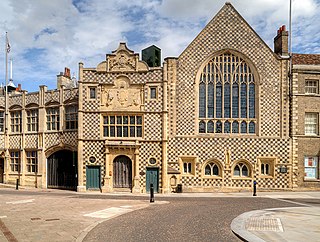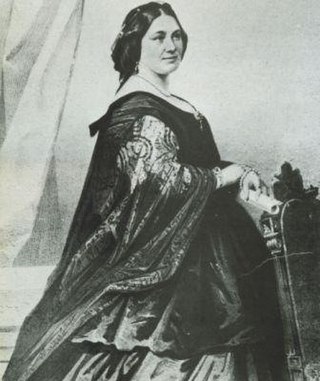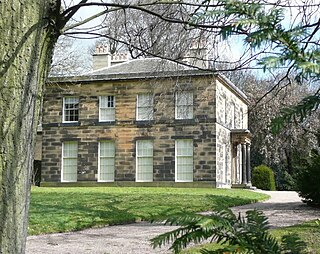
Holmfirth is a town in the Metropolitan Borough of Kirklees, West Yorkshire, England. It is located 6 miles (9.7 km) south of Huddersfield and 14 miles (23 km) west of Barnsley; the boundary of the Peak District National Park is 2 miles (3.2 km) to the south-west. The town is sited on the A635 and A6024 roads in the Holme Valley, at the confluence of the River Holme and Ribble. It mostly consists of stone-built cottages nestled on the eastern slopes of the Pennine hills.

Mirfield is a town and civil parish in the Metropolitan Borough of Kirklees, West Yorkshire, England. Historically part of the West Riding of Yorkshire, it is on the A644 road between Brighouse and Dewsbury. At the 2011 census it had a population of 19,563. Mirfield forms part of the Heavy Woollen District.

Kirklees is a metropolitan borough of West Yorkshire, England. The borough comprises the ten towns of Batley, Birstall, Cleckheaton, Dewsbury, Heckmondwike, Holmfirth, Huddersfield, Meltham, Mirfield and Slaithwaite. It is governed by Kirklees Council. Kirklees had a population of 422,500 in 2011; it is the third-largest metropolitan district in England by area, behind Doncaster and Leeds.

Slaithwaite is a town and former civil parish in the Colne Valley area of the metropolitan borough of Kirklees, in West Yorkshire, England. Historically part of the West Riding of Yorkshire, it lies in the Colne Valley, lying across the River Colne and the Huddersfield Narrow Canal, approximately 5 miles (8 km) south-west of Huddersfield.

Sowerby Bridge is a market town in the Upper Calder Valley in Calderdale in West Yorkshire, England. The Calderdale Council ward population at the 2011 census was 11,703.

Huddersfield is a market town in the Metropolitan Borough of Kirklees in West Yorkshire, England. It is the administrative centre and largest settlement in the Kirklees district. The town is in the foothills of the Pennines. The River Holme's confluence into the similar-sized Colne is to the south of the town centre which then flows into the Calder in the north eastern outskirts of the town.

Kirklees Council is the local authority providing most local government services for the metropolitan borough of Kirklees in West Yorkshire, England. The council is one of five constituent members of the West Yorkshire Combined Authority.

Cheltenham Town Hall is an early-20th century assembly rooms in Cheltenham, England. Unlike most town halls, it is a public venue and not the seat of the borough council, which is housed in the nearby Municipal Offices. It is a Grade II listed building.

Greenhead Park is an urban park located 0.5 miles (0.8 km) west of the town centre of Huddersfield, West Yorkshire, England. It is one of the largest parks in Huddersfield and was originally opened in 1884. It is an English Heritage grade II listed property and is also in a Conservation Area.

Islington Town Hall is a municipal facility in Upper Street, Islington, London. The town hall, which is the headquarters for Islington London Borough Council, is a Grade II listed building.
Joseph Woodhead was an English newspaper proprietor and editor and a Liberal Party politician.

Dewsbury Town Hall is a Victorian town hall that stands in front of the old marketplace in the centre of Dewsbury, West Yorkshire, England. It is a Grade II listed building.
Gordon Brodie Stewart is a British organist, conductor, and teacher.

Middlesbrough Town Hall is a municipal facility located in Albert Road in Middlesbrough, North Yorkshire, England. It is a Grade II* listed building.

King's Lynn Guildhall, more fully referred to as the Guildhall of the Holy and Undivided Trinity, is a municipal building in Saturday Market Place in King's Lynn, Norfolk. It is a Grade I listed building. The building was substantially extended in 1895, with the whole complex now generally known as King's Lynn Town Hall, with the 1895 extension being separately listed at Grade II. It is the usual meeting place of King's Lynn and West Norfolk Borough Council.

Wandsworth Town Hall is a municipal building on the corner of Wandsworth High Street and Fairfield Street in Wandsworth, London. The building, which is the headquarters of Wandsworth London Borough Council, is a Grade II listed building.

Susan Sunderland born Susan Sykes and known as the Calderdale Nightingale was a British singer. Some years after she retired the annual Mrs Sunderland Music Festival was organised in Huddersfeld and it is still running in the 21st century.

Brighouse Town Hall is a former municipal building in Thornton Square, Brighouse, West Yorkshire, England. The town hall, which was the headquarters of Brighouse Borough Council, is a Grade II listed building.

Meltham Town Hall is a municipal building in Carlile Street in Meltham, West Yorkshire, England. The building, which formerly operated as the offices of Meltham Urban District Council, is now The Crossroads Centre, which operates the local foodbank.

Kirkburton Hall, formerly known as Kirkburton Town Hall, and before that, as Springfield House, is a former municipal building in Penistone Road in Kirkburton, a town in West Yorkshire in England. The building, which was previously the offices and meeting place of the Kirkburton Urban District Council and is now a private residence, is a grade II listed building.



















